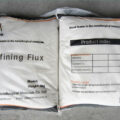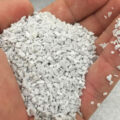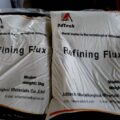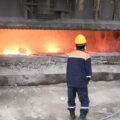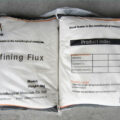Drossing flux for aluminum is used in the aluminum recycling process to improve the purity of molten aluminum.

It is known that the use of aluminum casting flux in the secondary aluminum industry can improve the direct recovery rate of aluminum during the remelting process. Aluminum and scrap aluminum, such as used beverage containers (UBC), are processed in this way. The remelting of aluminum in the furnace is carried out under the cover of a layer of molten salt to prevent the aluminum from oxidizing in the furnace atmosphere and promote the coalescence of molten aluminum, thereby maximizing the recovery rate of aluminum. During processing, an oxide film tends to form on the surface of the molten aluminum drop. The oxide film inhibits the coalescence of molten aluminum, resulting in the loss of smaller particles in the process, thereby reducing the amount of aluminum recovered. Non-recoverable aluminum droplets with oxide films are sometimes referred to as dross.
Drossing flux for aluminum in the furnace helps to strip and suspend the oxide film, thereby increasing the coalescence of droplets and reducing slag formation. The salt flux wets the oxide film and initiates the disintegration of the film, peeling it from the surface of the molten aluminum drop. The oxide film fragments peeled from the aluminum are still suspended in the flux. Aluminum droplets with a density greater than the flux then form a continuous molten pad under the flux layer. The flux also prevents further oxide formation by keeping the metal from the atmosphere in the furnace.
One type of aluminum casting flux is mainly composed of a mixture of high purity sodium chloride and potassium chloride. The high-purity salt used in this type of process is extracted and purified from the solution through complex, highly developed methods. The flux refining method is directed to enhanced recovery of aluminum in a remelting process.

